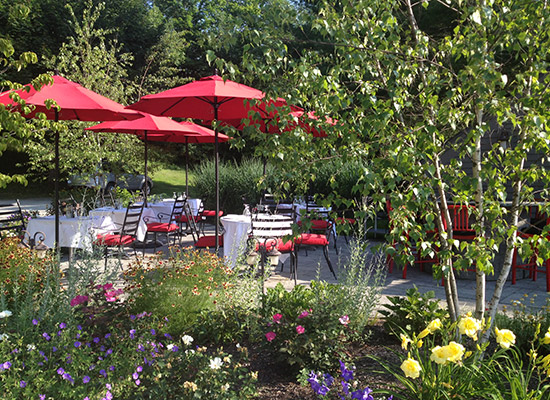There is so much more to lawn care than just mowing (and we do that too!).
Lawns are cut in balanced patterns, all edges and border areas will be hand trimmed to remove overgrowth and to maintain a crisp appearance. Grass clippings are removed from walkways, driveways, and landscape.
An application to turf to adjust soil pH. Optimal soil pH is a key factor in nutrient availability, microbial activity, soil structure and overall turf vigor.
An application to turf that has been found to be deficient in phosphorus through soil analysis. Without proper phosphorus levels, the turf will lose vigor and will thin dramatically.
Fertilization is completed just as turf begins to grow after our long winter. It promotes a quicker green-up which will help the turf to fill in any areas damaged due the winter’s ice and snow.
Fertilizer combined with a weed preventative material is applied to turf areas. It promotes green-up and works to prevent crabgrass and other select weeds from germinating.
Fertilizer with grub control is applied to turf areas as we get ready for summer. This process promotes the green up of turf, the controlling of grubs, and encourages thick growth patterns, reducing the potential of weeds.
A twice/season application of state-approved, low-dose pesticides, specifically formulated for the weeds identified in your lawn, is applied by one of our many state certified turf technicians. This is a liquid application, which allows for quicker up take by targeted weeds while leaving no long-standing residuals.
A preventative application is applied to help suppress grubs in your lawn.
Applications are applied that will suppress or prevent the spread of disease throughout turf areas. Liquid materials are used, and in many cases are repeated several times, in order to maintain control. This is largely dependent on the type of disease targeted and weather patterns.
Fertilizer is applied to turf areas in order to maintain green and very thick growth throughout the season. Thick turf helps to prevent weed invasion into otherwise healthy lawns.
An application to turf that has been found to be deficient in potassium through soil analysis. Potassium has a strong influence on drought tolerance, cold hardiness, and disease resistance of turf grasses.
An application of fertilizer is applied to turf areas, which will work to maintain green and thick growth until the end of season. Plus, additional materials are used that will encourage root growth during this critical time of turf development. Lawns fertilized in the fall not only receive the above benefits but also hold green better throughout the winter and are the first to green up in the spring.
An application to turf that has been found to be deficient in both potassium and magnesium. Magnesium is responsible for bringing out and maintaining a desirable turf grass color. This application is usually a follow-up to the Early Fall Lawn Fertilization.
Most of the soils in Vermont are of a pH that require lime in order to bring the pH to acceptable levels. Correct pH levels will allow for the proper absorption of nutrients and in many cases work to suppress the spread of unwanted moss.
This is the seeding of turf areas right over the top of the existing turf. In many cases, this is completed in conjunction with core aeration.
A specialized machine is used to slice a groove in the ground down through the existing sod and new seed is introduced and the groove is closed. This is a highly specialized service used for the installation of new lawn areas or to reestablish old thin lawns. The germination rates are very high.
Healthy plants require oxygen and turf is no exception to that rule. Cores or plugs are pulled from the ground throughout the turf areas. Core aeration significantly improves root growth and mass while at the same time reduces thatch and compaction.







